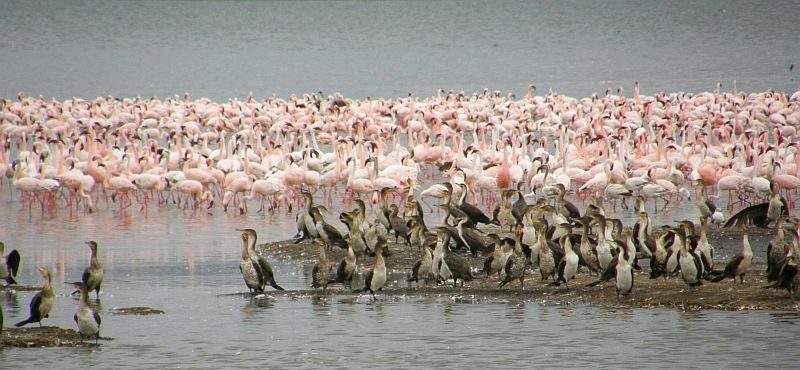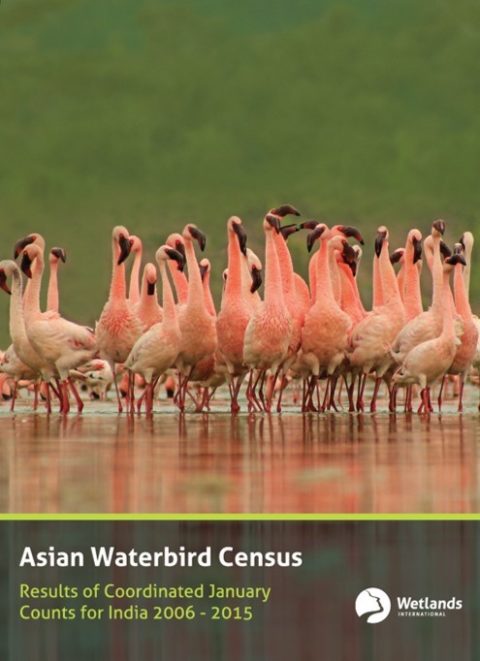
Wetlands International South Asia launches the Asian Waterbird Census 2006-2015 Synthesis Report
-
Asian Waterbird Census
-
International Waterbird Census
The Asian Waterbird Census 2006-2015 Synthesis Report by Wetlands International has launched today at the Convention on Migratory Species conference in India. The concept of ‘ecological connectivity’ is the top priority at the conference, calling for the protection and restoration of important geographical areas that support migratory species during breeding and feeding.
The results of the Asian Waterbird Census 2006-2015 are crucial to ongoing biodiversity negotiations throughout this year, highlighting critical data on the status of waterbirds and wetlands that will inform action plans and prioritise Ramsar sites, wetlands of international importance.
Between 2006-2015, over 1400 volunteers conducted waterbird counts at 1409 wetlands of 23  States and 3 Union Territories in India. The Asian Waterbird Census recorded presence of 170 waterbird species (85% of total waterbird species in India), including 142 migratory species (84% of total migratory waterbird species in the country) from 1409 wetlands (0.2% of the total number of wetlands in the country).
States and 3 Union Territories in India. The Asian Waterbird Census recorded presence of 170 waterbird species (85% of total waterbird species in India), including 142 migratory species (84% of total migratory waterbird species in the country) from 1409 wetlands (0.2% of the total number of wetlands in the country).
Two hundred seventy-two wetlands support 1% or more of the bio-geographic population of at least one species of waterbird and qualify as Wetlands of International Importance under criterion 6 of Ramsar Convention.
Sixty-five wetlands supported 20,000 or more waterbirds during at least one year of the assessment period. These sites qualify for designation as Wetlands of International Importance under criterion 5 of Ramsar Convention.
Five Ramsar sites which were counted at least five times during 2006-2015, the population of Cranes, Gulls, Terns and Indian Skimmer reported declining numbers especially for designating and managing wetlands of international importance under Ramsar Convention and providing input to AEWA, EAAFP and CMS.
One in every five waterbird species recorded in the census, for which population status is known, is globally threatened as per the IUCN Red List of Threatened Species. Of these, three are Critically Endangered (Baer’s Pochard, Sociable Lapwing and Spoon-billed Sandpiper), three Endangered (Black-bellied Tern, Great Knot and Greater Adjutant), and eight Vulnerable (Andaman Teal, Common Pochard, Dalmatian Pelican, Indian Skimmer, Lesser Adjutant, Marbled Teal, Sarus Crane and Woolly-necked Stork). White-bellied Heron and Siberian Crane, two Critically Endangered species, sighted during 1987-2005 period (from Assam and Rajasthan respectively) have not been reported by the AWC network in the current census.
The population of one in every four waterbird species recorded in the census, for which trends in the Central Asian Flyway are known, is declining. Out of thirty-three, 20 Threatened and Near Threatened waterbird species recorded during the census have a declining population trend. Reviews of population estimates and population trends of waterbirds, especially migratory waterbirds using the Central Asian Flyway, needs urgent attention as this information is outdated or is of poor quality.
“These results highlight critically important information on the status of waterbirds and wetlands for the government and other stakeholders to strengthen management action at internationally and nationally important wetlands. Additionally, it informs prioritisation of sites for designation of new Ramsar sites and under the Western/Central Asian Site Network for Siberian Cranes and Other Waterbirds of the Convention on Migratory Species.” says Dr Ritesh Kumar, Director, Wetlands International South Asia, joint editor of the report.
About Asian Waterbird Census
The Asian Waterbird Census (AWC), a citizen-science initiative on waterbirds is part of the global International Waterbird Census (IWC). Initiated in 1987, the census is the longest running citizen-science programme providing information on status of waterbirds and wetlands. Information collected in the census is used to develop global and flyway scale population estimates, and is used as a conservation tool, especially for designating and managing wetlands of international importance under Ramsar Convention and flyway networks.
The AWC is jointly coordinated in India by Wetlands International South Asia and Bombay Natural History Society, and supported by Wetlands International Global Office. Sixty-thousand wetland sites have been counted in 184 countries since the IWC started in 1967
